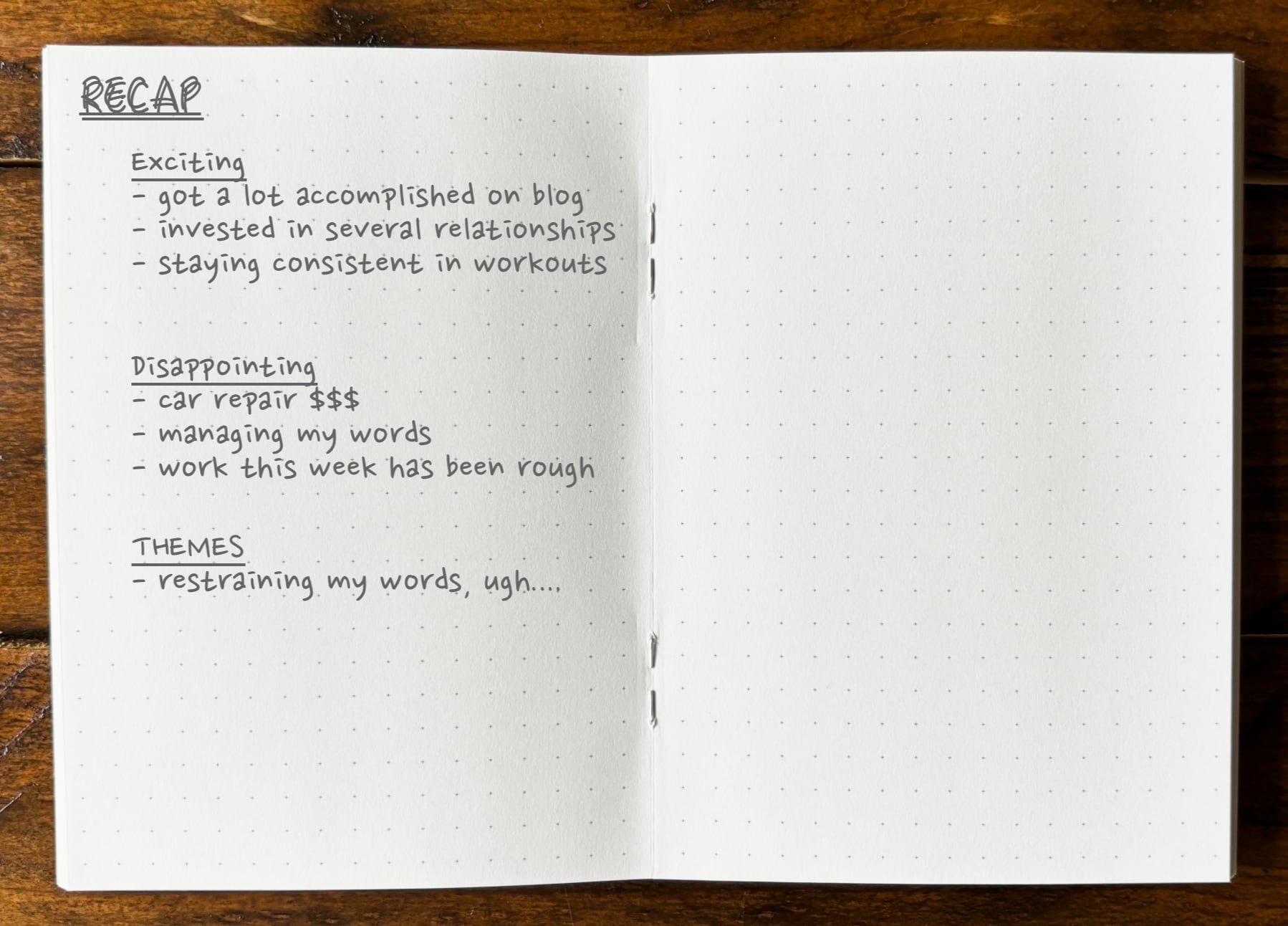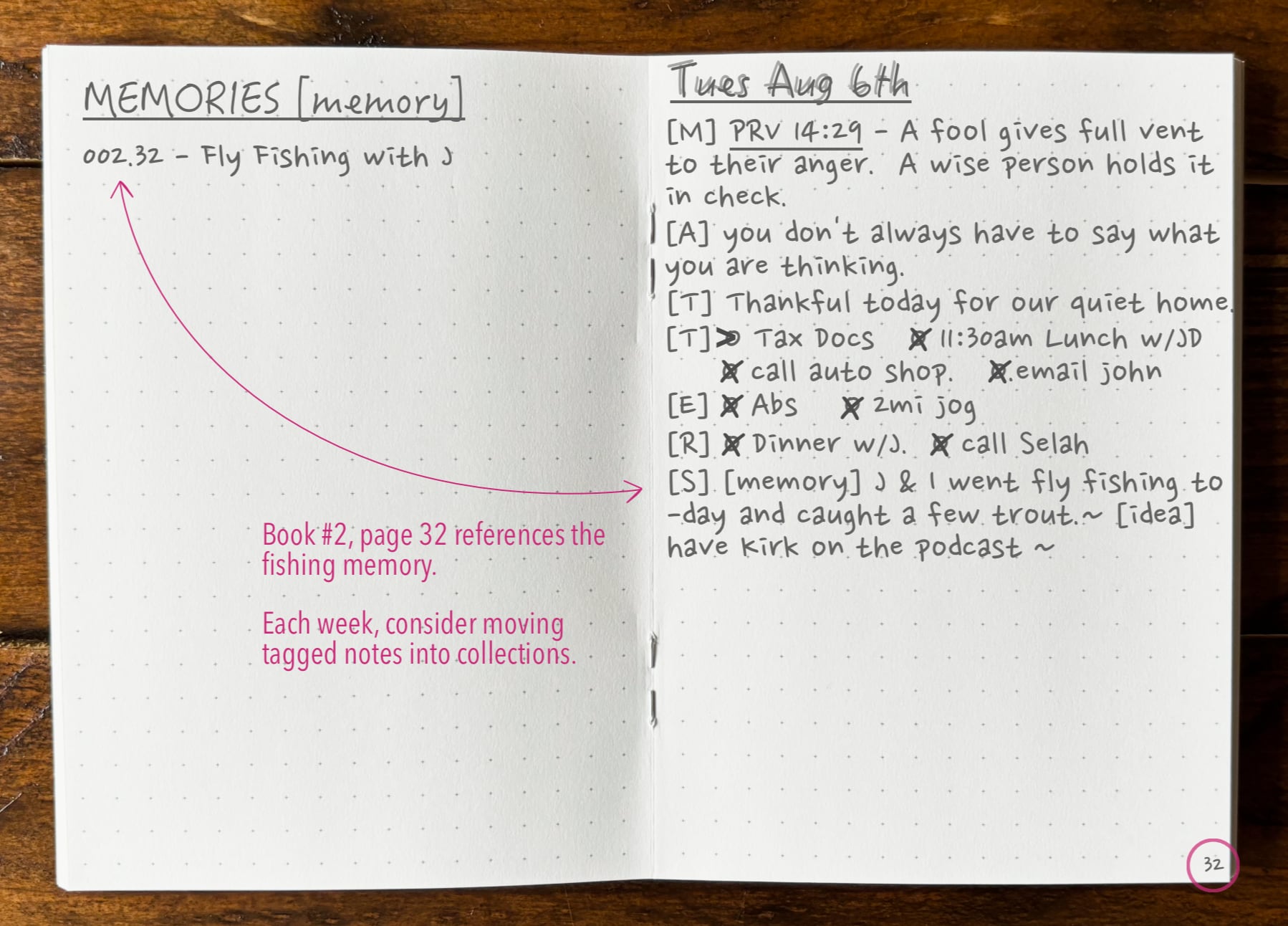In our previous article, we discussed Getting Started With Matters. To recap: set up your week and dedicate time each morning to your Matters journaling.
The Matters Journaling System is designed to be a 7-day experience, bookended by your initial setup and a final recap. Take a moment to flip back through each day’s entries. Look for moments that stand out to you—you might be surprised at what you’ve forgotten!
Exciting
To start your week’s close-out, take a moment to reflect on what you’re proud of or that you're really excited about. Don’t worry about whether others might see these achievements as trivial or small. Write down what makes you happy, proud, or accomplished. Ensure this section is never empty!
Take a moment to soak it all in.
Disappointing
Next, reflect on any moments that stung—those that left a bitter taste or made you grimace. While it's important not to be too hard on yourself, don't miss the opportunity to learn from these experiences. Sometimes, a grimace can build grit! Acknowledge these moments, but don’t dwell on them—then move on.
Themes
Look back on your journal entries, focusing on both your proud moments and disappointments. Are there any recurring themes that stand out? Consider whether certain patterns have emerged over the weeks, both in your wins and your challenges.

Collections
Finally, review your past week’s Matters Journal entries and identify any tagged notes that you might want to add to a collection.
Collections are a flexible way to group anything meaningful to you—memories, ideas, answered prayers, vacation itineraries, and more. If you notice a recurring tag or theme, consider gathering these entries into a Collection.
About Indexes
Central to the concept of Collections is the use of indexes. Indexes help you organize multiple journals and compile valuable lists or notes into smaller, easily referenced lists.
We recommend starting your journal with a main index on page one, leaving a few pages blank afterward to allow space for new Collections. A simple and effective index format is to note the book number, followed by a dot, and the page number. This system works whether you use multiple journals throughout the year or just one.
Your main index is essentially a reference to all of your collections, to which each collection references their respective day-to-day entry references.

Adding to a Collection
To begin, look back through the past week’s Matters Journal entries for any important memories, notes, or tags. If you didn’t use tags, that’s okay—you can still reference any page within your Collection index.
Next, create a Collection page for the given topic, and then note the book and page number in your main index.
Finally, add each reference to the appropriate Matters Journal entry page within your Collection, with a brief description. You don’t need to be verbose; the reference is there to point you to the full journal entry for more detail.

Collection Ideas
Collections can encompass anything meaningful to you—memories, answered prayers, business lists, appointments—anything goes!
A general rule of thumb: if you notice a repeated tag or topical theme, a Collection might be worth considering.
Wrapping Up
As you can see, Collections offer a robust yet simple way to expand how you use the Matters Journaling System to gather ideas, thoughts, and references.
It’s worth noting that Collections are optional. The Matters Journaling System is already highly useful and productive without them. However, if you’re looking to elevate your organization, utility, and reflection, Collections are a fantastic way to achieve these goals.
